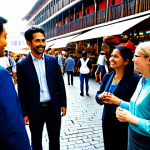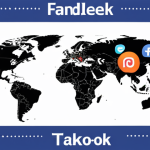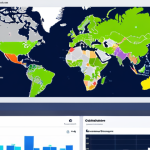As an overseas marketing expert, I’ve learned that preparing for a business trip isn’t just about itineraries and visas anymore. It’s an art, a delicate balance of logistics and intuition that separates a successful global campaign from a missed opportunity.
I recall countless times standing at customs, not just physically entering a new country, but mentally shifting gears to embrace its unique market pulse, ready for the unexpected.
The world of international marketing is hyper-dynamic. Gone are the days when a generic presentation would cut it; today, understanding localized nuances, leveraging real-time data insights, and even anticipating geopolitical shifts are non-negotiable.
With AI tools now able to analyze market trends faster than ever, the human touch in negotiation and relationship-building becomes even more paramount.
We’re moving towards a future where agility and cultural intelligence define success, demanding a level of preparation far beyond mere travel arrangements.
It’s about being ready for anything, from a sudden regulatory change to an unexpected opportunity for collaboration that could reshape your entire strategy.
Let’s explore this in more detail below.
Beyond the Itinerary: Decoding Cultural Nuances Before You Land

In my years navigating diverse global markets, I’ve come to realize that a successful business trip extends far beyond merely booking flights and accommodations. It’s about deep immersion, an almost intuitive grasp of the cultural undercurrents that shape business interactions. I recall a pivotal meeting in Tokyo where a meticulously prepared slide deck nearly fell flat because I initially misunderstood the subtle importance of hierarchy and indirect communication. It taught me that genuine preparation isn’t just about data points; it’s about understanding the unspoken rules, the nuanced gestures, and the deeply ingrained values that influence decision-making. You simply cannot walk into a new market expecting your home-grown strategies to translate directly. It’s akin to trying to play jazz with only classical sheet music – the notes are there, but the rhythm and soul are entirely different. This is where true cultural intelligence becomes your most valuable asset, transforming potential pitfalls into powerful advantages by showing genuine respect and adaptability. It’s an ongoing journey of learning and unlearning, truly.
1. Researching the Unwritten Rules of Engagement
Before stepping foot on a plane, I dedicate significant time to understanding the cultural landscape. This goes beyond reading basic etiquette guides. I dive into ethnographic studies, current events, and even local literature to get a feel for the prevailing sentiments and historical context. For instance, knowing the importance of small talk in some cultures versus the directness valued in others can make or break a first impression. I vividly remember a situation in Germany where my attempt at casual, rapport-building chatter was met with polite but firm redirection to the agenda – a clear signal that efficiency was paramount. Conversely, in a Latin American setting, jumping straight into business without building a personal connection would have been seen as abrupt and even rude. It’s about anticipating these subtle dynamics and preparing your demeanor, your presentation style, and even your conversational pacing accordingly. This level of foresight allows for a much smoother, more productive, and ultimately, more respectful interaction, proving you’re not just there to sell, but to truly connect.
2. Language Beyond Words: Non-Verbal Cues and Body Language
What we say is often only a fraction of what we communicate, especially across cultures. I’ve learned, sometimes the hard way, that gestures, eye contact, and even personal space vary dramatically. A thumbs-up in one country might be an encouraging sign, while in another, it’s deeply offensive. I had an incident in the Middle East where my casual habit of crossing my legs and showing the sole of my shoe was pointed out as disrespectful – a completely unintentional but significant gaffe. Such experiences underscore the critical need to research and observe non-verbal communication. It’s not about mimicking, but about being aware and adjusting your own body language to convey respect and openness. Paying attention to how others receive information – are they more receptive to direct eye contact, or do they prefer a more diffused gaze? Do they gesture broadly, or are their movements more restrained? These observations inform how I present, how I listen, and how I build rapport. It’s an art of subtle mirroring and careful observation that builds trust over time.
The Digital Diplomat: Leveraging Tech for Pre-Trip Intelligence
The modern overseas marketing expert has an arsenal of digital tools at their disposal that earlier generations could only dream of. The days of relying solely on dusty almanacs and static market reports are long gone. Now, before I even pack my suitcase, I’m already immersed in the digital pulse of my destination. I remember how a deep dive into local social media trends, facilitated by advanced analytics platforms, completely reshaped a campaign strategy just days before a major launch in Southeast Asia. We discovered a nascent hashtag movement that indicated a shift in consumer preference, allowing us to pivot our messaging to resonate directly with emerging sentiment. This immediate, data-driven insight is what separates a prepared professional from one who’s merely traveling. It’s not just about finding facts; it’s about sensing the current, anticipating the waves, and navigating the digital currents that define a market before you physically arrive. This proactive approach, powered by technology, mitigates risks and illuminates opportunities in ways that traditional methods simply cannot.
1. Harnessing AI for Market Trend Analysis and Localization
AI is no longer a futuristic concept; it’s an indispensable co-pilot for international strategists. I regularly use AI-powered tools to sift through vast amounts of global data, identifying emerging market trends, consumer sentiments, and competitive landscapes in real-time. For instance, I recently used a linguistic AI to analyze thousands of customer reviews for a specific product category in the German market. The AI not only translated but also identified nuanced emotional responses and common complaints that a human reviewer might miss due to volume. This allowed us to tailor our product messaging and even anticipate potential objections during sales pitches. Furthermore, AI’s ability to localize content, adapting not just language but also cultural idioms, humor, and references, is revolutionary. I always run our core marketing materials through these tools to ensure they don’t just “translate” but “resonate.” It’s about avoiding embarrassing cultural faux pas and ensuring your message truly lands, demonstrating an understanding that goes beyond surface-level translation. This proactive localization saves time, prevents missteps, and dramatically increases the effectiveness of our communication efforts abroad.
2. Social Listening and Influencer Mapping for Local Insights
Before a trip, I engage heavily in social listening, tracking conversations on local platforms and identifying key opinion leaders and influencers. This isn’t just about finding people with large followings; it’s about identifying authentic voices who truly connect with the target audience. I remember discovering a niche micro-influencer in Brazil whose genuine passion for sustainable products resonated deeply with an audience segment we were struggling to reach. Their posts, though not reaching millions, sparked genuine engagement and trust within their community, something a mega-celebrity endorsement couldn’t replicate. Monitoring these conversations provides unfiltered insights into local concerns, aspirations, and even humor. It reveals the true pulse of the market – what excites people, what bothers them, what trends are bubbling under the surface. This intelligence is gold. It helps me tailor my presentations, refine our talking points, and even anticipate questions or objections. It’s like having a hundred local consultants whispering insights into your ear before you even land, preparing you for conversations that feel organic and informed, rather than generic and detached.
Navigating the Unseen: Geopolitical Foresight and Risk Mitigation
As an overseas marketing expert, I’ve learned that the world of international business is rarely just about supply and demand; it’s intricately woven with geopolitical threads. Before any major trip, my preparation always includes a deep dive into the political and economic stability of the target region. I vividly recall a time when a seemingly minor political development in a key European market, which I had initially dismissed as irrelevant to our product launch, escalated rapidly. Had I not taken the time to consult local analysts and monitor real-time news feeds, we would have launched a campaign that was entirely tone-deaf, potentially damaging our brand reputation irrevocably. This experience hammered home the fact that macro-level events, from trade disputes to snap elections, can have immediate and profound impacts on market receptiveness and operational viability. Ignoring these dynamics isn’t just naive; it’s professionally irresponsible. It’s about anticipating ripples before they become waves, ensuring your strategy isn’t just resilient but also adaptable to unforeseen challenges. My goal is always to minimize surprises by maximizing my understanding of the external landscape.
1. Monitoring Regulatory Changes and Compliance Frameworks
One of the most critical, yet often overlooked, aspects of international preparation is understanding the local regulatory environment. Each country has its own intricate web of laws governing everything from data privacy (like GDPR in Europe or specific privacy acts in various US states) to advertising standards and consumer protection. I remember a particularly stressful period when a last-minute change in packaging regulations in a South Asian country nearly derailed an entire product shipment. We had to scramble to redesign and reprint materials, incurring significant costs and delays. This kind of oversight can be incredibly expensive, not just in financial terms but in terms of brand trust. My process now includes dedicated time to consult with local legal experts or trade associations to ensure our strategies are fully compliant. This proactive approach prevents costly penalties, avoids reputational damage, and ensures our entry into a new market is smooth and legitimate. It’s not the most glamorous part of the job, but it’s absolutely non-negotiable for long-term success and truly being perceived as a reliable partner.
2. Emergency Preparedness and Contingency Planning
While we all hope for smooth sailing, the reality of international travel, especially for business, is that unforeseen circumstances can and do arise. From natural disasters and civil unrest to personal health emergencies or even unexpected travel disruptions, having a robust contingency plan is vital. I’ve personally experienced flights delayed by volcanic ash clouds and had to navigate a city during an unexpected public transport strike. In each instance, having a pre-thought-out plan – whether it was alternative transport options, backup communication methods, or knowing the nearest embassy contacts – made a stressful situation manageable. Before every trip, I review local emergency services, identify safe zones, and ensure I have reliable international roaming or local SIM cards. I also make sure key team members know my itinerary and how to reach me. This isn’t about being paranoid; it’s about being prepared, recognizing that your responsibility extends beyond the boardroom to your personal safety and continuity of operations. A calm, collected response in a crisis can be a true testament to your professionalism, and it comes from having thought ahead.
Building Bridges, Not Just Deals: The Art of Relationship Cultivation
While the digital age has transformed how we gather information and disseminate messages, the core of international business still boils down to human connections. I’ve seen countless times how a carefully nurtured relationship, built on trust and mutual respect, can open doors that data analytics alone never could. In a particularly challenging negotiation in Latin America, it wasn’t the superior product features that sealed the deal, but the personal rapport I had cultivated over several meetings, sharing meals, and discussing topics beyond business. This genuine connection fostered a level of trust that allowed us to navigate complexities and find common ground. It’s about investing time in the pre-trip phase to identify not just potential clients, but potential partners and mentors, and then approaching them with an open mind and a true desire to understand their needs and perspectives. This isn’t just networking; it’s about building a foundation of shared understanding that transcends transactional goals. I always remind myself that people ultimately do business with people they like and trust, regardless of the flashy presentations.
1. Identifying Key Stakeholders and Their Motivations
Before any significant international meeting, I meticulously map out all the key stakeholders involved, from potential clients and partners to industry regulators and even local community leaders. Understanding their individual and collective motivations, their pain points, and what truly drives them is paramount. For example, I once prepared for a pitch assuming the primary decision-maker was solely focused on cost-efficiency. Through careful research and discreet inquiries, I discovered their true priority was brand prestige and long-term sustainability. Pivoting my presentation to emphasize these aspects transformed the conversation. This strategic understanding allows me to tailor my approach, frame my proposals in a way that resonates with their specific objectives, and anticipate potential objections. It’s like preparing for a chess match; you need to understand not just the rules, but the likely moves of your opponent and how they think. This deep-dive profiling ensures that every interaction is purposeful and moves us closer to a genuine partnership, not just a one-off deal. It’s about knowing who you’re speaking to, truly.
2. The Power of Reciprocity and Cultural Exchange
One of the most powerful tools in my relationship-building arsenal abroad is the principle of reciprocity, infused with cultural sensitivity. This isn’t about grand gestures, but about thoughtful consideration. Bringing small, culturally appropriate gifts from my home country, offering to share insights about my market, or simply expressing genuine interest in their local customs, cuisine, or history – these seemingly minor acts can forge powerful bonds. I vividly recall a meeting in Southeast Asia where a simple act of remembering a colleague’s family anecdote from a previous conversation completely changed the dynamic of our follow-up discussion. It showed I was listening, that I cared beyond the immediate business objective. These acts of genuine cultural exchange break down barriers and foster a sense of mutual respect and understanding. It transforms a cold business encounter into a warm human interaction, which is often the precursor to enduring and fruitful partnerships. It’s about building a bridge of shared humanity before you even discuss contracts or deliverables.
Mastering the Message: Tailoring Your Pitch for Local Resonance
The effectiveness of your marketing message can diminish drastically if it’s not precisely tuned to the local frequency. I’ve personally seen brilliant campaigns falter because their core message, though impactful in one market, completely missed the mark in another. It’s like telling a joke in a foreign language – the words might be correct, but the humor, context, or cultural references are lost. For an overseas marketing expert, this means that every piece of communication, from a sales pitch to a brand slogan, must undergo a rigorous localization process that transcends mere translation. I remember preparing for a product launch in the Middle East where our initial slogan, highly effective in Western markets, carried unintended negative connotations in Arabic. A local marketing consultant swiftly identified the issue, helping us craft a new phrase that not only avoided offense but also resonated deeply with local values of community and tradition. This level of meticulous adaptation is what transforms a generic global message into a powerful local narrative, ensuring that your audience doesn’t just hear you, but truly understands and connects with you on a deeper level.
1. Content Localization vs. Content Translation: A Crucial Distinction
Many assume “translation” is enough for international content, but as I’ve learned, it’s a dangerous oversimplification. Localization is about adapting the entire context – cultural nuances, local idioms, humor, examples, and even currency and measurement units – so that the content feels as if it was created specifically for that audience. I once oversaw a campaign where a direct translation of a testimonial from an American customer sounded boastful and insincere to a European audience that valued humility. We had to rework it entirely, focusing on the problem-solving aspect and downplaying the individual achievement. This involves a much deeper dive than simply converting words. It requires understanding what examples resonate, what metaphors are understood, and what values are prioritized. It’s about ensuring your narrative evokes the right emotions and builds trust within that specific cultural framework. Failing to localize means your message, however well-intentioned, will feel alien, generic, or worse, culturally tone-deaf, instantly eroding your credibility. It’s the difference between speaking *to* someone and truly *connecting* with them.
2. Visuals and Aesthetics: Beyond Universal Appeal
Just like language, visuals carry strong cultural connotations. What is considered aesthetically pleasing, professional, or even appropriate can vary dramatically from one region to another. My rule of thumb is never to assume universal appeal in imagery. I recall a significant rebranding effort where our global imagery, featuring bright, bold colors and direct eye contact, had to be significantly softened for certain Asian markets where subtlety and indirect communication were more valued. We adjusted color palettes to reflect local symbolism and chose models whose expressions conveyed respect and community rather than overt confidence. Even the choice of font and layout can communicate professionalism or lack thereof, depending on local design sensibilities. This attention to visual detail demonstrates respect for the local culture and ensures that your brand identity is perceived positively. It’s not just about making things look nice; it’s about making them look *right* for the people you’re trying to reach. Every visual cue contributes to the story you’re telling, and if that story isn’t culturally relevant, it won’t resonate. It’s a key part of how trust is built visually.
Logistics as Strategy: Optimizing Travel for Peak Performance
For an overseas marketing expert, travel logistics are far more than just getting from point A to point B; they are an integral part of your strategic toolkit. The way you manage your journey can profoundly impact your energy levels, mental clarity, and overall effectiveness during critical meetings. I learned this the hard way during a grueling trip to Australia where I underestimated the severity of jet lag. I arrived exhausted and struggled to articulate my points during a crucial early morning presentation, missing vital nuances in the discussion. It was a wake-up call that prioritizing physical and mental well-being throughout the travel process is not a luxury, but a necessity for peak performance. Think of it this way: your body and mind are your most valuable assets, and proper travel planning is the maintenance schedule that keeps them running optimally. It’s about minimizing friction and maximizing your readiness, ensuring that when you walk into that boardroom, you’re not just physically present, but mentally sharp, energized, and ready to seize every opportunity. Every decision, from flight times to packing choices, contributes to your overall strategic readiness.
1. Mastering Jet Lag and Maintaining Energy Levels
Jet lag is a formidable opponent, but it’s not insurmountable. My strategy involves a combination of pre-trip adjustments and in-flight discipline. For westbound flights, I try to shift my sleep schedule earlier a few days before departure; for eastbound, I push it later. On the plane, I immediately set my watch to the destination time, hydrate religiously, and avoid excessive alcohol or caffeine. I also prioritize sleep over entertainment. Upon arrival, sunlight exposure in the morning and avoiding naps until the local evening are crucial for resetting my circadian rhythm. I remember landing in London after an overnight flight and immediately forcing myself to stay awake and active until late evening. It felt brutal in the moment, but the next day, I was remarkably refreshed and ready for a full schedule of meetings. This disciplined approach ensures that I’m not just physically present but mentally agile from day one, allowing me to fully engage and respond effectively, rather than feeling sluggish and reactive. It’s an investment in your personal productivity that pays dividends.
2. The Art of Smart Packing and Local Adaptability
Packing for an international business trip isn’t just about fitting clothes into a suitcase; it’s about anticipating every possible scenario and adapting to local conditions. My packing list always includes versatile clothing suitable for both formal meetings and casual networking, layers for fluctuating temperatures, and comfortable shoes for navigating unfamiliar cities. I also research local power adapters, cellular network compatibility, and even common medications. I recall arriving in a country during an unexpected heatwave, and my entire wardrobe felt completely inappropriate. Since then, I always check the long-range weather forecast for my destination *before* I pack. Moreover, having digital copies of all important documents – passport, visa, itineraries, health insurance – stored securely in the cloud and on a separate device has saved me from countless potential headaches. Being prepared for minor inconveniences means I can focus my energy on the business at hand, rather than being distracted by a missing charger or an unseasonal downpour. It’s about ensuring self-sufficiency and peace of mind, freeing up valuable mental bandwidth for strategic thinking.
| Aspect | Low-Context Culture Example (e.g., Germany, USA) | High-Context Culture Example (e.g., Japan, Saudi Arabia) |
|---|---|---|
| Communication Style | Direct, explicit, “say what you mean.” Emphasis on logical arguments and clear facts. | Indirect, nuanced, implied meanings. Emphasis on harmony, relationships, and subtle cues. |
| Decision Making | Often individual or hierarchical; decisions made based on facts and data. Quick to present and expect a clear “yes” or “no.” | Consensual, collective; takes time for group harmony. Decisions may not be openly stated in first meetings. |
| Time Perception | Linear, punctual, rigid schedules. “Time is money.” | Polychronic, flexible, relationships often take precedence over strict schedules. Building rapport is key. |
| Business Meetings | Focus on agenda, efficiency, clear action points. May start immediately with business. | Emphasis on building rapport, small talk, and social pleasantries before discussing business. Patience is crucial. |
| Feedback Style | Direct, constructive criticism is often given openly. | Indirect, subtle, often given through third parties or non-verbal cues to preserve face. |
Post-Trip Momentum: Sustaining Connections and Leveraging Insights
The success of an international business trip isn’t solely measured by the deals closed or the contacts made while you’re physically present. True expertise lies in how you sustain the momentum, cultivate the relationships, and leverage the insights gained long after you’ve returned home. I’ve often seen companies invest heavily in a trip only to let the connections cool and the lessons learned fade away once the team is back in the office. This is where the real competitive edge is lost. I recall a pivotal trip to South Korea where, immediately upon my return, I meticulously debriefed with my team, not just on the outcomes, but on the subtle market shifts and cultural cues I observed. This led to an immediate adjustment in our follow-up strategy, focusing on personalized, culturally sensitive communication rather than generic emails. This post-trip phase is as critical as the preparation itself, acting as the bridge between immediate gains and long-term strategic growth. It’s about ensuring that every handshake, every conversation, and every observation contributes to a continuous cycle of learning and adaptation, transforming ephemeral interactions into enduring value for your global marketing efforts.
1. Strategic Follow-Up and Relationship Nurturing
The immediate post-trip follow-up is critical, but it needs to be strategic and culturally sensitive, not just a generic “nice to meet you” email. My approach involves personalized communication that references specific conversations, insights shared, or even local cultural points we discussed. For example, if we talked about a particular local landmark or a recent sporting event, I might subtly reference it in my follow-up to show genuine engagement and memory. The timing is also crucial: a prompt, well-crafted email within 24-48 hours shows professionalism and enthusiasm. Beyond the initial outreach, I schedule regular, non-intrusive check-ins, sharing relevant industry articles, market insights, or even local news that I know would interest them. This nurturing goes beyond the immediate business objective; it’s about building a long-term relationship based on mutual value and trust. I’ve found that these sustained efforts often lead to unexpected opportunities and partnerships down the line, far beyond what any single trip could achieve. It’s truly about cultivating a garden, not just harvesting a single crop.
2. Internal Debriefing and Knowledge Transfer
The insights gathered during an international trip are invaluable, but only if they are effectively shared and integrated within your organization. Immediately upon returning, I schedule a comprehensive debrief with my core team, and often, relevant cross-functional departments. This isn’t just a summary of what happened; it’s a deep dive into observations about market dynamics, competitor activities, cultural nuances, and potential opportunities or threats. I encourage open discussion, challenging assumptions, and extracting actionable intelligence. For instance, after a trip to Germany, my debrief included detailed observations on their highly organized and direct communication style, which we then incorporated into our internal team-to-team communication guidelines for that market. Capturing these lessons – whether through formal reports, shared documents, or even informal workshops – creates a living repository of institutional knowledge. This ensures that the collective intelligence gained from one trip becomes a valuable asset for future endeavors, preventing repetitive mistakes and building upon past successes. It elevates individual experiences into collective expertise, fostering a truly adaptive and globally intelligent organization.
Concluding Remarks
This journey through the intricacies of international marketing reveals a profound truth: true global success isn’t just about what you sell, but how deeply you understand the people you’re selling to. My years on the ground have taught me that every cultural nuance, every geopolitical tremor, and every well-nurtured relationship builds an invaluable foundation. It’s an ongoing commitment to learning, adapting, and truly connecting on a human level that transforms overseas endeavors from mere trips into pathways for enduring growth and mutual prosperity. This proactive, empathetic approach is, without a doubt, your greatest competitive advantage in the global arena.
Useful Information
1. Always prioritize obtaining a local SIM card or an eSIM for your destination. It’s often far more cost-effective than international roaming, ensures reliable connectivity for navigation and communication, and allows you to seamlessly integrate with local digital services during your stay.
2. Research and download popular local digital payment apps before you go. While credit cards are widely accepted, many markets, particularly in Europe and parts of Asia, heavily rely on specific mobile payment solutions, making transactions smoother and often more secure.
3. Familiarize yourself with local business card etiquette. In many cultures, exchanging cards is a ritualistic process involving specific handling, presentation, and acceptance gestures. Treating them with respect shows cultural awareness and builds rapport.
4. Download a reliable translation app like Google Translate or Microsoft Translator and enable its offline language packs for your destination. This is a lifesaver when internet access is spotty or unavailable, allowing for basic communication and understanding of local signs.
5. Leverage professional networking platforms like LinkedIn to research and connect with key individuals before your trip. This pre-engagement can provide valuable context, facilitate introductions, and set the stage for more productive in-person meetings.
Key Takeaways
Successful international marketing transcends mere travel; it’s a strategic blend of cultural intelligence, technological leverage, geopolitical foresight, and genuine human connection. Prioritize deep pre-trip research, embrace digital tools for insights, build authentic relationships, meticulously tailor your messaging, and optimize logistics for peak performance. Remember, long-term global success hinges on continuous learning, adaptability, and cultivating lasting partnerships well beyond the initial handshake.
Frequently Asked Questions (FAQ) 📖
Q: With
A: I tools now able to analyze market trends faster than ever, how do you truly leverage that ‘human touch’ in negotiation and relationship-building, especially when time is short on a business trip?
A1: Oh, this is the million-dollar question, isn’t it? Honestly, AI is brilliant for the data, but it can’t read a room, pick up on subtle cues, or genuinely laugh at a shared moment – that’s all us.
What I’ve found crucial is front-loading the trust-building. Before I even step foot in a new city, I’m trying to get a feel for who I’ll be meeting. A quick LinkedIn deep dive, understanding their company’s recent wins, maybe even a common alma mater if I’m lucky.
But once you’re face-to-face, it’s about presence. I remember a deal in London where the numbers were tight, but what swung it was an impromptu chat over coffee about our kids’ football teams.
It wasn’t about the data points anymore; it was about two people finding common ground. So, I make it a point to slow down, listen more than I talk, ask questions that aren’t just about the deal, and genuinely connect.
It’s those five-minute, non-business conversations that build the bridges AI just can’t. They let you feel out personalities, understand underlying motivations, and frankly, make people want to work with you.
You can’t put a metric on true rapport, but it’s priceless.
Q: You mentioned preparing for ‘anything, from a sudden regulatory change to an unexpected opportunity.’ How do you practically build that kind of agility and cultural intelligence into your preparation, beyond just reading a country brief?
A: That’s where the “art” really comes in, because a country brief is just the tip of the iceberg, right? For me, it’s about building a network before you need it.
I always try to connect with local consultants, ex-pats, or even just friends of friends who live and breathe that market. They can give you the real-time gossip, the “unwritten rules” that no official document will ever cover.
I recall a time in New York when a new city ordinance around product packaging blindsided a competitor mid-campaign, but because I’d had a casual chat with a local industry lawyer months prior, I had a heads-up and could pivot our strategy instantly.
And for cultural intelligence? It’s not just about knowing not to hand out business cards with your left hand. It’s about understanding humor, silence, directness levels.
Before a trip, I try to consume local media – not just news, but pop culture, TV shows, even local stand-up comedy – to internalize the cadence and references.
It’s messy, not a checklist, but it means you’re not just ready for “anything,” you’re prepared to intuitively respond when “anything” happens.
Q: The idea of ‘mentally shifting gears to embrace its unique market pulse’ sounds critical. What’s one tangible, perhaps unconventional, way you’ve found to truly get a feel for a new market’s pulse, beyond just reviewing market reports?
A: Oh, absolutely. Market reports are essential, they give you the numbers, but they don’t give you the vibe. My favorite unconventional trick?
I always carve out an hour or two – sometimes even just 30 minutes – to wander through a busy, non-touristy supermarket or a local mall. Seriously. You learn so much by observing how people shop, what products are prominently displayed, the packaging, the pricing relative to other items, even the way people interact with store staff.
I vividly remember being in a supermarket in Sydney, and seeing the sheer variety of plant-based milks compared to what was common back home. It was a subtle signal, but it spoke volumes about a burgeoning health and wellness trend that wasn’t fully captured in the reports I’d seen.
It gave me an immediate, visceral sense of local consumer priorities and what was gaining traction. It’s raw, unfiltered data that you process with your gut, not just your brain, and it’s surprisingly effective for catching those emergent market pulses that haven’t hit the official reports yet.
📚 References
Wikipedia Encyclopedia
구글 검색 결과
구글 검색 결과
구글 검색 결과
구글 검색 결과
구글 검색 결과






